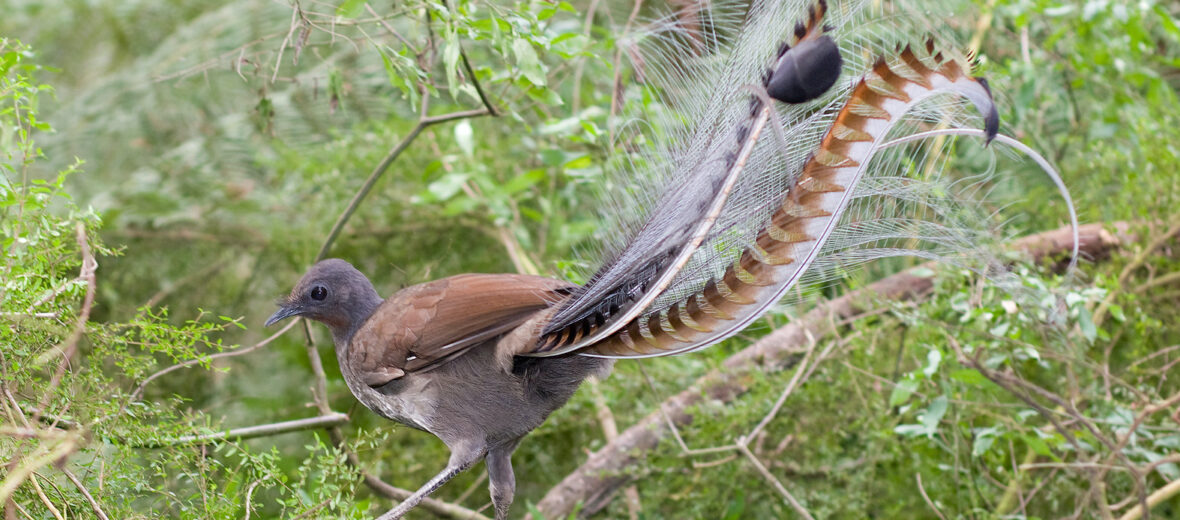
Famous for their ability to mimic sounds, the lyrebird has been known to recreate the sound of a car alarm, a camera shutter, and even a chainsaw! The male superb lyrebird has a beautiful tail which he uses to impress the ladies during his courtship dance. When it comes to wooing the ladies, the Superb Lyrebird draws his incredible tail forward over his head, fanned like a mardi-gras headpiece, and shimmers it to attract attention from females. The chief threat to lyrebirds is climate change. However, these birds are abundant enough to be listed as Least Concern by the IUCN. Their population trend is listed as decreasing though.
First the Stats…
Scientific name: Menura
Weight: Up to 2.1 lbs.
Height: Up to 39 inches
Wingspan: Up to 31 inches
Lifespan: Up to 30 years
Now on to the Facts!
1.) They are ground dwelling birds with strong legs and feet and short rounded wings.
2.) They are generally poor fliers and rarely take to the air except for periods of downhill gliding.
3.) The superb lyrebird is found in areas of rainforest in Victoria, New South Wales, and south-east Queensland. It is also found in Tasmania where it was introduced in the 19th century.
4.) Lyrebirds are shy and hard to approach, especially the Albert’s lyrebird. Do to this, little information about their behavior is known. When lyrebirds detect potential danger, they pause and scan their surroundings, sound an alarm, and either flee the area on foot, or seek cover and freeze.
5.) Firefighters sheltering in mine shafts during bushfires have been joined by lyrebirds.
But wait, there’s more on the lyrebird!
6.) They are primarily insectivores (eat mainly insects), but they will occasionally take amphibians, reptiles, and seeds.
7.) Female superb lyrebirds start breeding at the age of 5 – 6, and males at the age of 6 – 8.
Did you know…?
The lyrebird is capable of imitating almost any sound and they have been recorded mimicking human sounds such as a mill whistle, a cross-cut saw, chainsaws, car engines and car alarms, fire alarms, camera shutters, dogs barking, rifle-shots, music, crying babies, mobile phone ring tones, and even the human voice.
8.) Male lyrebirds call mostly during winter, when they build and maintain an open arena-mound located in dense bush. They will then sing and dance in a courtship display to win potential mates, of which the male lyrebird has many!
9.) Females lay a single egg that is incubated for up to 42 days.
10.) Collared sparrowhawks, gray goshawks, currawongs, wedge-tailed eagles, monitor lizards, and snakes all prey on the lyrebird.
Now a Short Lyrebird Video!
Also, check out the Critter Science YouTube channel. Videos added frequently!
Want to suggest a critter for me to write about? Let me know here.



